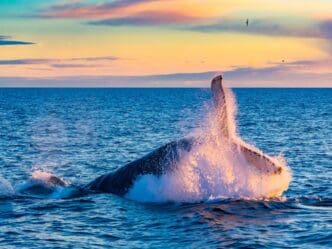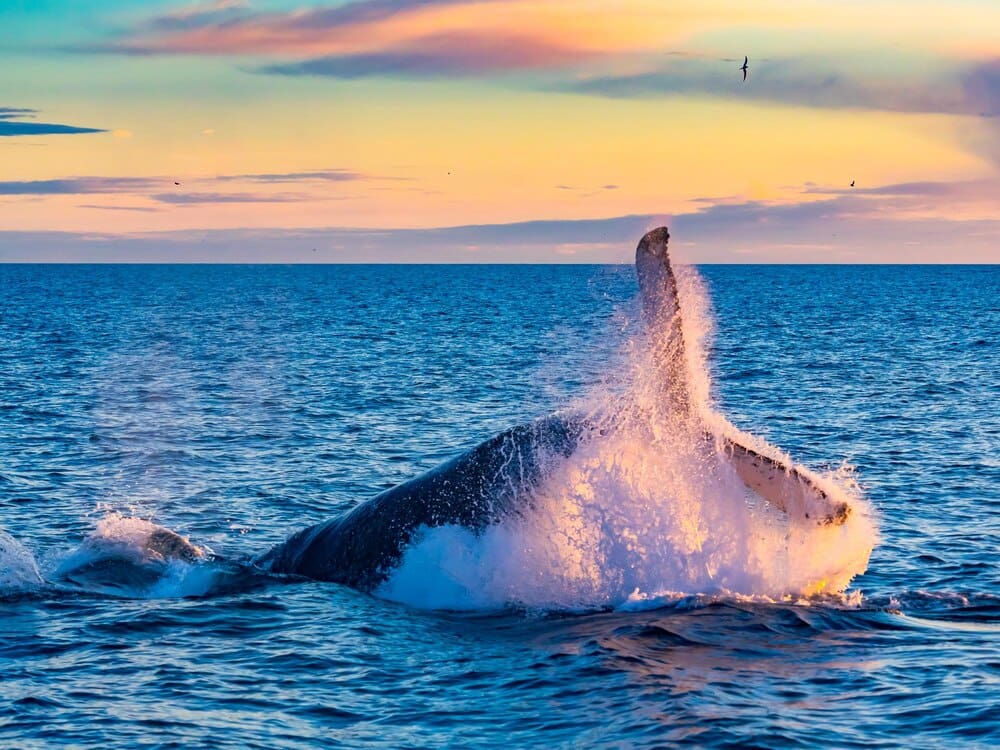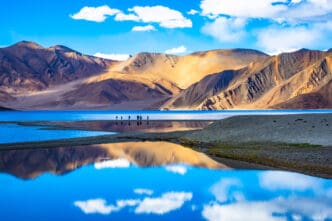For travelers seeking a profound connection with the natural world, few experiences rival the awe of watching the ocean’s giants surface from the deep. Whale watching offers a front-row seat to the lives of these magnificent marine mammals, from the acrobatic breaches of humpbacks in Hawaii to the gentle nursery of gray whales in Mexico’s lagoons. The best time and place to go depends entirely on the species you hope to see and their epic migratory patterns, which dictate their presence in specific locations, primarily for feeding in nutrient-rich polar waters or breeding in warmer equatorial zones. This guide details the world’s premier destinations, ensuring your next adventure aligns perfectly with the planet’s grandest wildlife spectacle.
Understanding the Whale Watching Seasons
The key to successful whale watching is understanding migration. Most baleen whales, like humpbacks and grays, undertake some of the longest migrations of any mammal on Earth. They spend their summers feeding in the cold, productive waters of the Arctic or Antarctic.
As winter approaches and the ice packs expand, they travel thousands of miles to warmer, tropical waters. These temperate zones provide safe, calm environments for them to give birth and nurse their young. This means the peak whale watching season in a given location is a predictable, annual event tied directly to this cycle.
It’s also crucial to remember the hemispheres have opposite seasons. When it’s summer and peak feeding time in Alaska (June-August), it’s winter and peak breeding time in places like Australia and South Africa. Planning your trip requires aligning your travel dates with the whale’s presence in that specific part of their journey.
Top Destinations in the Americas
The coastlines of North and South America offer some of the most diverse and accessible whale watching opportunities on the planet, from friendly giants in desert lagoons to orcas hunting in dramatic fjords.
Baja California, Mexico
Every winter, the Pacific gray whale completes its monumental migration to the warm, sheltered lagoons of Mexico’s Baja California Peninsula. From late January through April, places like San Ignacio Lagoon, Ojo de Liebre (Scammon’s Lagoon), and Magdalena Bay become nurseries. What makes this destination truly unique is the behavior of the “friendly” whales, where curious mothers and calves often approach the small tour boats, allowing for incredibly intimate and respectful encounters.
Tour operators here are strictly regulated to protect the whales, using small boats called pangas to get close without being intrusive. Seeing a mother whale lift her calf to the surface for a closer look is an experience that defines the magic of this region.
Maui, Hawaii, USA
The shallow, protected Au’au Channel between Maui, Lanai, and Molokai becomes the world’s most densely populated humpback whale breeding ground from December to April. An estimated 10,000 humpbacks journey here from their feeding grounds in Alaska. The sheer number of whales means sightings are virtually guaranteed.
Visitors can witness a full suite of behaviors: spectacular breaches, powerful tail slaps, and the complex “songs” of the males, which can often be heard through hydrophones dropped from tour boats. The activity is so prevalent that you can often spot whales directly from the beaches of West and South Maui.
Peninsula Valdés, Argentina
A UNESCO World Heritage site, Peninsula Valdés is a critical breeding ground for the Southern Right Whale from June to December. These massive, slow-moving whales come so close to shore that they can easily be watched from the cliffs of Puerto Pirámides. They are known for their callosity patterns—unique patches of rough skin on their heads—which scientists use to identify individuals.
Beyond the right whales, the peninsula is famous for its pods of orcas. These intelligent predators are known for their unique hunting technique of intentionally beaching themselves to snatch sea lion pups from the shoreline, a dramatic event that draws photographers and documentary crews from around the world.
Tadoussac, Quebec, Canada
At the confluence of the Saguenay and St. Lawrence rivers, an underwater phenomenon creates a krill-rich feeding ground that attracts a stunning variety of whales from May to October. This area is one of the best places in the world to see the colossal blue whale, the largest animal on Earth. Fin whales, minke whales, and humpbacks are also common visitors.
What sets Tadoussac apart is its resident population of snow-white beluga whales, which can be seen year-round. The mix of resident and migratory species makes it a dynamic and reliable destination for any marine life enthusiast.
Premier Spots in Europe and the Atlantic
From the volcanic archipelagos of the mid-Atlantic to the frigid waters of the Nordic countries, Europe offers a wealth of whale watching opportunities, often set against breathtakingly dramatic landscapes.
The Azores, Portugal
This remote archipelago is a world-class destination for cetacean diversity. Thanks to its deep offshore waters, the Azores are a year-round home to sperm whales, the legendary giants of Moby Dick. Throughout the year, various dolphin species also patrol these waters.
The real spectacle occurs during the spring migration (March to June), when the largest animals on the planet—blue whales, fin whales, and sei whales—pass through on their way to northern feeding grounds. The chance to see a blue whale makes the Azores a bucket-list destination for serious whale watchers.
Húsavík, Iceland
Widely acclaimed as the “Whale Watching Capital of Europe,” the town of Húsavík on Iceland’s north coast offers incredibly reliable sightings in Skjálfandi Bay. During the summer months (April to October), the bay teems with minke whales, white-beaked dolphins, and harbor porpoises. The star attractions, however, are the acrobatic humpback whales that come to feed.
Blue whales also make occasional appearances, adding to the excitement. The tours often use traditional Icelandic oak boats, adding a touch of historic charm to the adventure, all while surrounded by Iceland’s stunning volcanic scenery.
Andenes, Norway
Situated far above the Arctic Circle, Andenes offers a unique year-round whale watching calendar. In the summer, tours head to the edge of a deep underwater canyon called Bleik Canyon, a rich feeding ground for sperm whales. Sightings of these toothed giants are so reliable that many operators offer a “whale guarantee.”
In the winter, the focus shifts as massive pods of orcas and humpback whales follow vast schools of herring into the coastal fjords. This creates a thrilling spectacle of coordinated hunting, offering a raw and powerful glimpse into the Arctic marine ecosystem.
Adventures in the Southern Hemisphere
Below the equator, the seasons are flipped, and a different cast of marine giants takes center stage, from land-based viewing in South Africa to deep-sea encounters off New Zealand.
Hermanus, South Africa
Hermanus proudly claims the title of the best land-based whale watching destination in the world. Between June and November, Southern Right Whales arrive in Walker Bay to mate and calve, often coming within a few dozen feet of the rocky shoreline. A 7.5-mile cliff path provides the perfect vantage point for watching them breach and sail-tail.
The town even employs a “Whale Crier,” who walks the streets blowing a kelp horn to alert locals and tourists to the location of the whales. This charming tradition underscores how deeply intertwined the town’s culture is with the annual arrival of the whales.
Kaikoura, New Zealand
The secret to Kaikoura’s success is its geology. The deep Kaikoura Canyon, an underwater trench just off the coast, creates a nutrient-rich environment that supports a resident population of giant sperm whales year-round. This makes it one of the most reliable places on Earth to see these deep-diving behemoths.
In addition to sperm whales, visitors can spot dusky dolphins, orcas, and, during their migration (June-August), humpback whales. The stunning backdrop of the snow-capped Kaikoura Ranges meeting the Pacific Ocean makes the experience visually unforgettable.
Hervey Bay, Australia
Known as Australia’s humpback whale capital, Hervey Bay offers a different kind of encounter. Between July and November, this calm, sheltered bay serves as a rest stop for humpbacks and their newborn calves on their southern migration back to Antarctica. Instead of just passing through, the whales linger here for days or even weeks.
This relaxed setting results in incredible “mugging” encounters, where curious whales voluntarily approach the boats, swimming around and under them for extended periods. The focus is on respectful, intimate observation of natural mother-calf interactions.
The Ultimate Frontier: Polar Whale Watching
For the truly adventurous, the planet’s polar regions offer the final frontier of whale watching, where wildlife encounters unfold amidst a landscape of ice and raw, untouched beauty.
Antarctica
An expedition cruise to the Antarctic Peninsula (November to March) is the pinnacle of all wildlife journeys. The nutrient-rich waters support an incredible biomass, attracting large numbers of humpback, minke, and fin whales. Orca pods patrol the ice floes, hunting for seals, while the sheer scale of the landscape—towering icebergs, vast glaciers, and colonies of tens of thousands of penguins—is breathtaking.
Whale sightings are not just an activity here; they are an integral part of the Antarctic experience, a constant and powerful reminder of the richness of life in this extreme environment.
Responsible Whale Watching: A Traveler’s Guide
As the popularity of whale watching grows, so does the importance of ensuring it is done ethically and sustainably. The well-being of the whales must always be the top priority.
Choosing the Right Operator
Seek out tour operators who are certified by local or national environmental bodies. Look for companies that employ marine biologists as guides, as they provide valuable educational context and are more likely to prioritize animal welfare. A responsible operator will always have a clear policy on sustainable practices.
Onboard Etiquette
Once on the water, follow the crew’s instructions. Avoid making loud noises or sudden movements that could startle the animals. Never attempt to touch, feed, or swim with the whales unless it is part of a specially permitted and regulated program (as seen in very few locations worldwide).
Understanding the Rules
Reputable operators strictly adhere to regulations governing minimum approach distances, which vary by country and species. They will often cut their engines or shift to neutral when near whales to minimize noise disturbance and the risk of propeller strikes. Your choice of operator directly contributes to the conservation of these animals, so choose wisely.
From the warm nurseries of the tropics to the icy feeding grounds of the poles, the world offers a breathtaking array of opportunities to witness whales in their natural habitat. Each destination provides a unique window into their complex lives. By traveling thoughtfully and choosing operators who respect these magnificent creatures, we can ensure that the wonder of whale watching remains a powerful force for conservation for generations to come.








